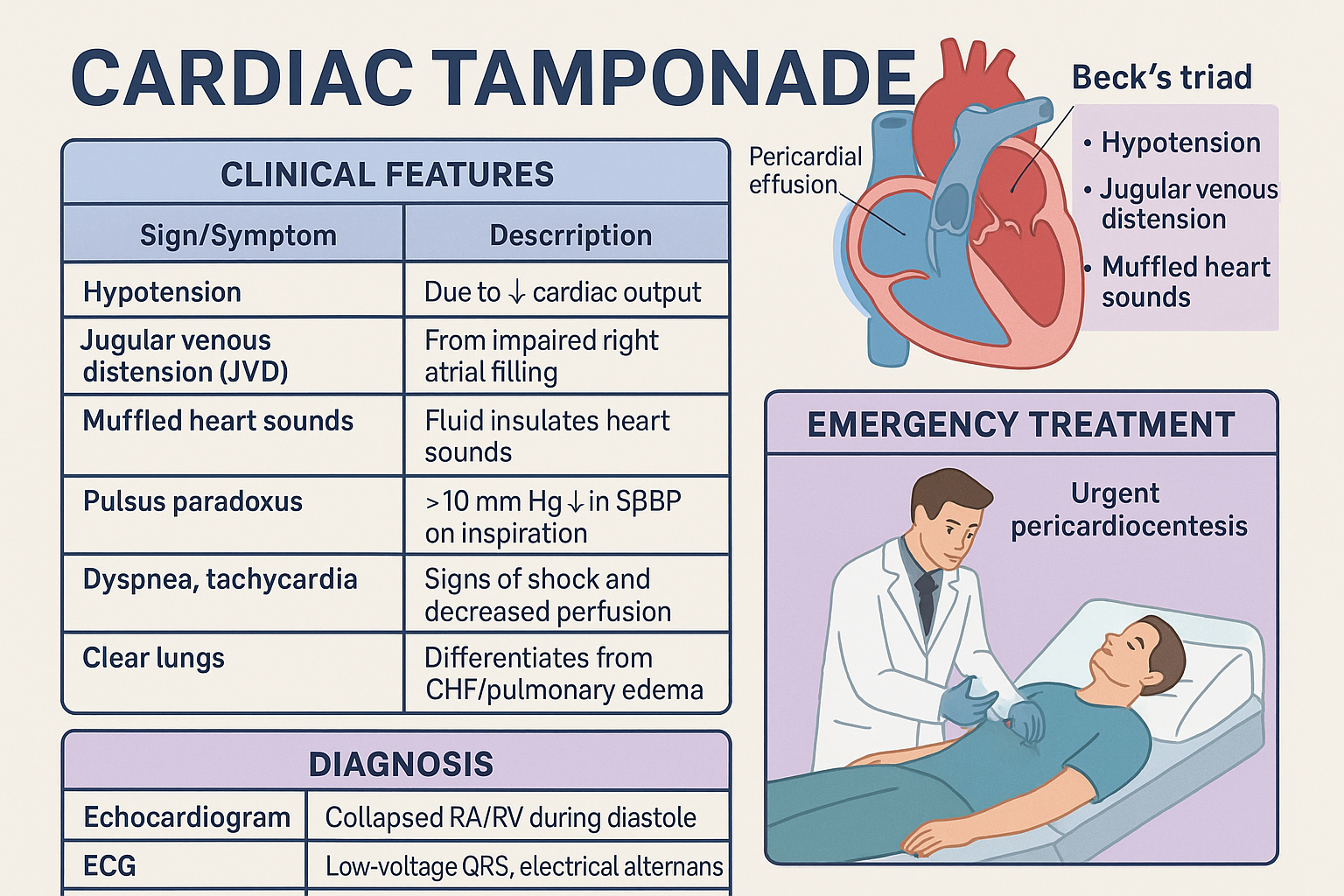💔 Cardiac Tamponade: When Fluid Kills the Pulse
Cardiac tamponade is a life-threatening compression of the heart caused by pericardial fluid buildup. It’s frequently tested on USMLE exams because it presents with classic physical exam findings and requires emergency intervention.
USMLE Buzzword: Hypotension + JVD + muffled heart sounds = Beck’s triad
🧬 Pathophysiology Recap
Accumulation of fluid in the pericardial sac
Inhibits ventricular filling during diastole
Leads to ↓ stroke volume → hypotension and shock
Can occur due to trauma, malignancy, infection, or post-MI (Dressler syndrome)
🩺 Clinical Features
| Sign/Symptom | Description |
|---|---|
| Hypotension | Due to reduced stroke volume |
| JVD | From impaired venous return |
| Muffled heart sounds | Insulated by pericardial fluid |
| Pulsus paradoxus | SBP drop >10 mmHg on inspiration |
| Dyspnea, tachycardia | Signs of poor perfusion |
| Clear lung fields | Helps differentiate from CHF |
🔬 Diagnostic Clues
| Test | Finding |
|---|---|
| Echocardiogram | RA/RV diastolic collapse, swinging heart |
| ECG | Low voltage QRS, electrical alternans |
| Chest X-ray | Enlarged, globular heart ("water bottle heart") |
| Pericardial pressure | Increased → impaired preload |
💊 Emergency Management
| Step | Intervention |
|---|---|
| 1 | Immediate pericardiocentesis |
| 2 | IV fluids to support preload |
| 3 | Treat underlying cause (e.g., trauma, cancer) |
| 4 | Monitor with serial echocardiograms |
Don’t delay pericardiocentesis if tamponade is suspected!
📚 Sample USMLE Vignette
A 65-year-old male with lung cancer presents with dyspnea and chest fullness. Exam reveals JVD, hypotension, and muffled heart sounds. ECG shows electrical alternans. What’s the diagnosis?
✅ Answer: Cardiac tamponade → immediate pericardiocentesis
📲 Call to Action
💢 Don’t let the pressure build up on test day.
📲 Download the King of the Curve App to:
Master cardiac emergencies
Practice echo and ECG image quizzes
Earn Curve Coins while preparing smarter
Climb the leaderboard one question at a time
Frequently Asked Questions (FAQs)
-
Aim for 4-6 focused hours, ensuring you incorporate breaks to avoid burnout.
-
Practice mindfulness techniques, take practice exams under realistic conditions, and maintain a balanced lifestyle.
-
Set short-term goals, seek support from mentors, and reward yourself for small achievements.
-
Regular exercise improves focus, reduces stress, and enhances overall mental clarity.
-
KOTC offers personalized learning tools, gamification features, and adaptive question banks to help students stay on track without burnout.


